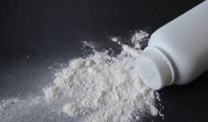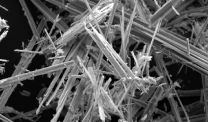Researchers Use Marine Bacteria to Reduce Asbestos Toxicity
Research & Clinical TrialsWritten by Michelle Whitmer | Edited By Walter Pacheco

Researchers from the University of Pennsylvania’s Department of Earth and Environmental Science have found that bacteria from extreme marine environments may potentially detoxify asbestos. The process involves bioremediation, which is a branch of biotechnology that uses living organisms such as bacteria to remove contaminants or toxins from the environment.
The study found that marine microbes are a better option for asbestos bioremediation than soil bacteria or fungi that have been tested in the past. Researchers decided to try the microbes because they use inorganic compounds and can interact with several minerals in their natural environments.
Two specific bacterial species are at the center of the team’s research: Deferrisoma palaeochoriense and Thermovibrio ammonificans. The idea is to use both types of bacteria to counteract the iron content and fibrous structure of asbestos, which is what makes it so toxic and dangerous to inhale. Asbestos fibers can lodge in the body and cause inflammation, eventually leading to cancers such as mesothelioma and other serious health issues.
Bacteria Lessons Toxicity
At the beginning of the study, researchers incubated the microbes for seven days at 140 or 167 degrees Fahrenheit, which are the microbes’ preferred temperatures. They were heated in small bottles that also contained asbestos. During this time samples were taken to keep track of any cell growth or to find changes in chemical composition or mineral structure.
D. palaeochoriense removed some iron from the asbestos, according to the study, but the fibrous nature of the structure still remained.
“You can make the mineral less toxic by eliminating the chemical reactivity that comes with the iron, but you still have that fibrous structure, so the next question is, ‘How do we break down the shape?’” senior study author Ileana Pérez-Rodríguez, assistant professor of earth and environmental science, told Penn Today.
The second bacteria, T. ammonificans, was able to disrupt the structure of one of two mineral types of asbestos during the study. It did this by accumulating silicon from serpentine asbestos, which has curly fibers. It was not able to do the same with amphibole asbestos, which has straight, needle-shaped fibers. Researchers already knew from previous studies that the structure of asbestos minerals can be disrupted by the removal of silicon.
Study authors said the use of microbial-based treatments for asbestos are a better alternative to current methods that use either high temperatures or strong acids to do the job. They said more studies are needed to see if this method may work on a large scale to successfully detoxify asbestos. The University of Pennsylvania’s research is published in the journal Applied and Environmental Microbiology.
Dangers of Asbestos
Asbestos is a carcinogenic mineral that was once used in many products because of its resistance to heat, electricity and corrosion. Inhaling or ingesting its fibers can lead to inflammation, scarring or cancer decades after asbestos exposure.
Many times people come into contact with asbestos during home renovations or when buildings are being demolished. If a structure was built before the 1980s, there is a good chance asbestos may be present throughout the building. Homes and buildings from that era may have asbestos hiding in the walls, pipes, floor tiles, insulation or cement.
Be aware that any do-it-yourself home renovation project could cause dangerous asbestos fibers to become airborne, leading to toxic asbestos exposure. Experts recommend hiring a professional asbestos abatement company if a structure contains asbestos.






